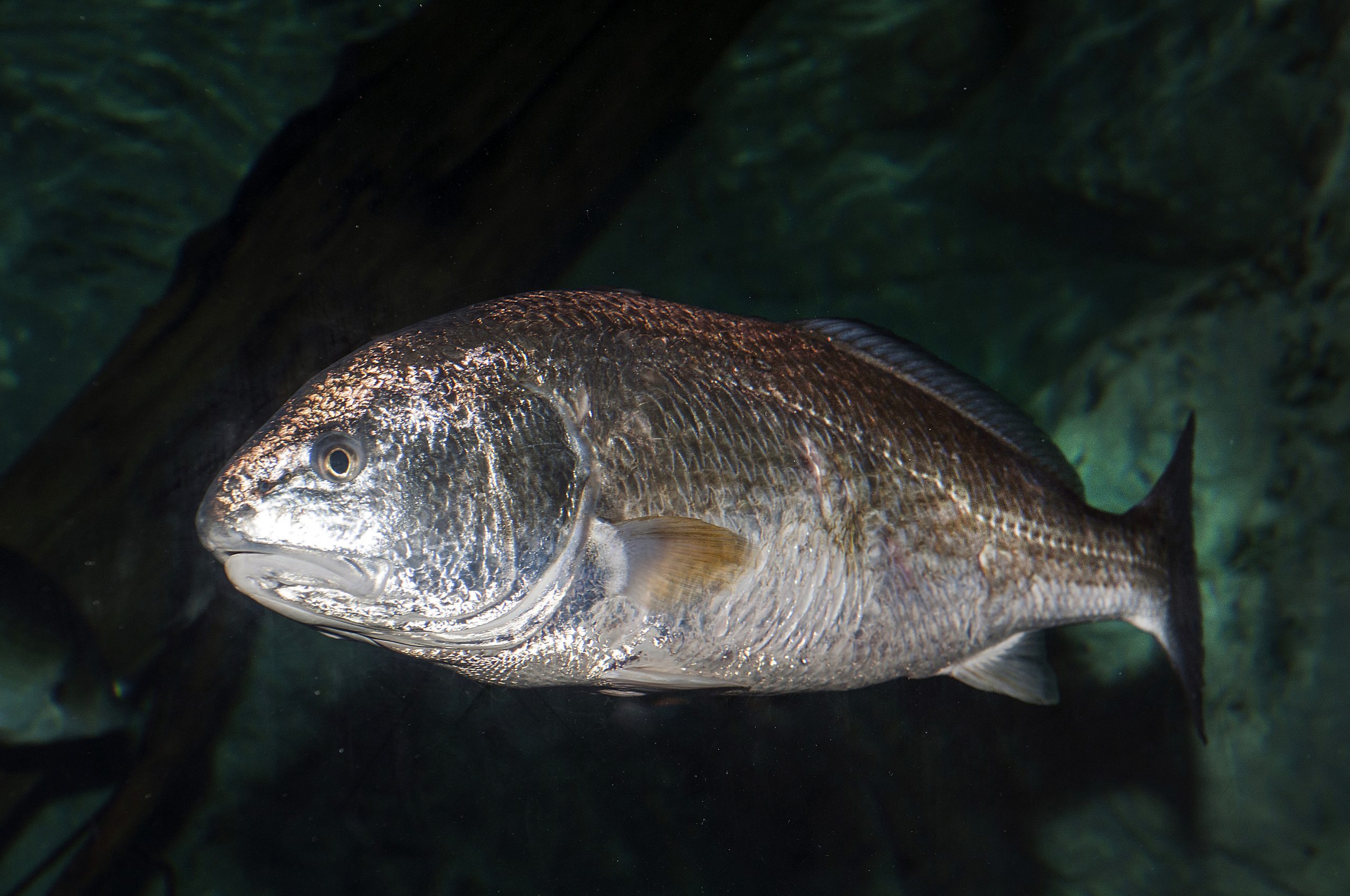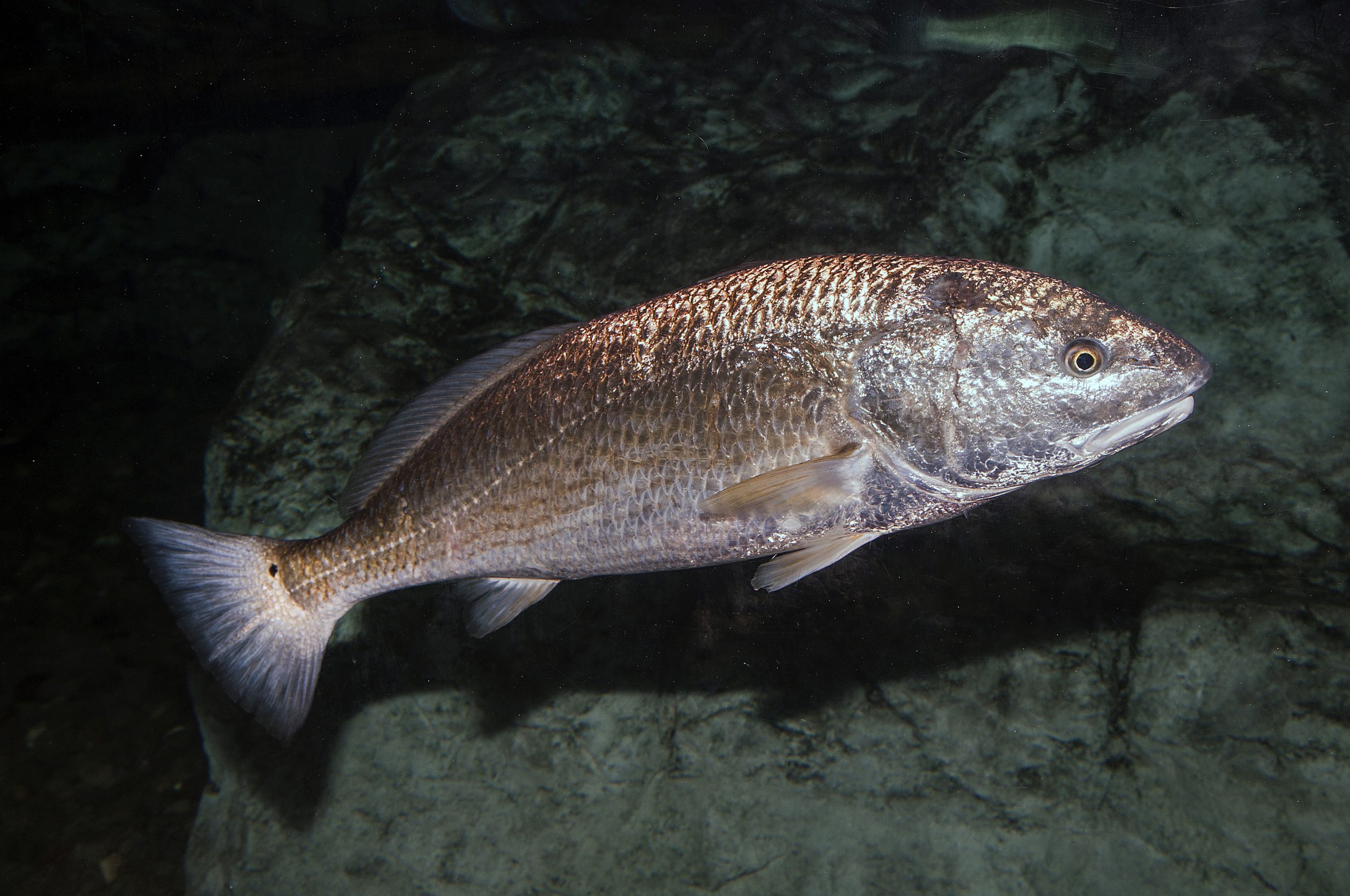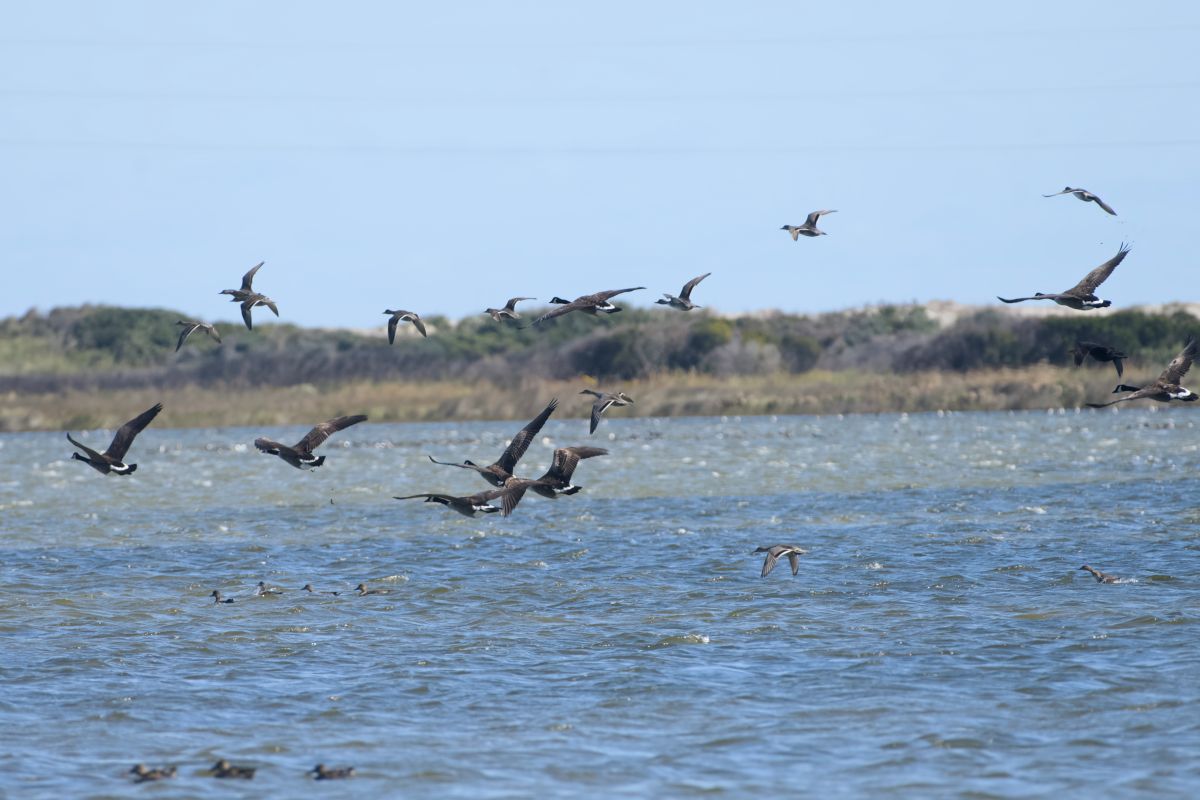
Red drum, North Carolina’s official state saltwater fish, live in coastal and estuarine waters from Massachusetts to Mexico.
The colors can range from a deep blackish, coppery color to almost completely silver. The most common color is reddish bronze.
Supporter Spotlight
In 1971, the North Carolina General Assembly designated red drum as the state saltwater fish. The Tar Heel State has long been known for its trophy-sized red drum that can weigh more than 40 pounds.
“Red drum are usually caught in the surf and sound between Oregon Inlet and Cape Lookout. The state record for red drum is a 94-pound, 2-ounce specimen caught in 1984 off of Hatteras Island,” said Lee Paramore, fisheries biologist with the North Carolina Division of Marine Fisheries. “In addition to being the state record, it is also a world record red drum for all tackle.”
North Carolina has produced 10 out of the 16 current world record red drum.
“They have at least one large ocellated spot on their tail, with many having two. This is why red drum are also called “spot-tail bass,” Paramore said.
Because of that spot, which resembles an eye, the species’ scientific name is Sciaenops ocellatus — the Greek “Sciaenopsis” for perch-like fish and the Latin “ocellatus” for eye-like, colored spot.
Supporter Spotlight
“Biologists think that the spots could be used to fool predators into attacking the red drum from the tail instead of near their eyes, allowing the fish to escape,” said Paramore.
They are also known as channel bass, redfish, drum and puppy drum, according to the North Carolina Coastal Reserve and National Estuarine Research Reserve.

Red drum get their common name not only because of their color, but also because during spawning season, males give off a drum-like noise by vibrating a muscle in their swim bladder. The species is part of the family that includes Atlantic croaker, spot, black drum, weakfish and spotted seatrout and is most abundant from Virginia to Florida.
“Large red drum of up to 90 pounds live in the coastal waters of North Carolina throughout the year and are observed in the surf during spring and fall. They are commonly found in the Pamlico Sound during summer months,” said Paramore.
Spawning occurs during the fall around coastal inlets and in the Pamlico Sound.
Larval and juvenile red drum use several shallow estuarine habitat types in coastal sounds and rivers during the first few years of their life, Paramore said. Once they mature at about 3-4 years of age, or roughly 32 inches in length, they move out of the estuaries to join adult spawning schools in the ocean.
Red drum commonly reach 40 years of age or older. The oldest fish on record was 62 and caught in North Carolina, Paramore said.
This fish is an opportunistic feeder, and their diet can change as they grow in age and change their habitat. Small crab, and shrimp make up most of a juvenile drum’s diet.
Adult red drum will also feed on several other species of available fish, including Atlantic menhaden, mullet and spot.
Drum tend to like water temperatures above the low 50s, with the best fishing when waters reach the low-70-degree mark. Pamlico Sound and its estuaries, plus the Hatteras Island beaches are among the best places to catch red drum.
Red drum are highly sought after targeted by recreational anglers throughout the year in the coastal sounds, rivers and beaches of North Carolina.
Techniques used to catch red drum vary, but included regular spinning and fly tackle, using live, dead and artificial bait.
“Over the past 10 years, red drum have regularly placed in the top five most targeted fish species in state coastal waters. Landings change annually and most fish captured are released,” he said.
The red drum recreational harvest 12-year average is 227,015 fish, equal to 1,018,965 pounds, since 2008. Release numbers are much higher, averaging 2,025,672 individuals released since 2008, said Paramore.
By using a circle hook and bringing the fish directly to shore or boat and not “playing” with the drum, the survival rate for caught and released red drum can be greatly increased. It’s also important to be gentle when handling any fish, and holding each specimen underwater so it can obtain get badly needed oxygen from the water before releasing.
There’s no directed commercial fishery for red drum in North Carolina today, and historically the species only made up a small portion of North Carolina’s total commercial landings, said Chris Batsavage, fisheries manager and special assistant for councils with the state Division of Marine Fisheries.
“Compared to the entire Atlantic coast, North Carolina is the major player accounting for more than 95% of the Red drum harvest over the past two decades. Virginia is the only other significant contributor of commercial landings. Harvest in North Carolina fluctuates annually and has averaged 162,690 pounds since 2008,” he said.
Gill nets are the main gear used to take red drum.
“Red drum are jointly managed by both the North Carolina Fishery Management Plan for interjurisdictional fisheries, Amendment 2 to the Atlantic States Marine Fisheries Commission, or ASMFC, Fishery Management Plan for Red drum,” said Batsavage.
This plan requires circle hooks be used in some recreational fisheries, and expanding the current small-mesh gill net attendance requirements in the commercial fishery.
Amendment 2 to the ASMFC plan was adopted in June 2002, and required states to implement and maintain management measures that prevent overfishing and achieve optimum yield in the Red drum fishery.
“Regulations enacted as part of the original North Carolina Red drum fishery management plan have satisfied this coastwide requirement,” Batsavage said.
Research has shown that future efforts need to include information on the size distribution of recreational releases, commercial discard estimates, fisheries independent data on recruitment of juvenile fish through adults, assessment of adult stocks, estimates of fecundity, or fertility, of females, and validation of subadult abundance, he said.
Batsavage said that the strict rules for red drum in North Carolina are why most fisherman release their fish back into the water.
“In North Carolina, the current rules state that in state waters that are between shore and 3 miles offshore, one fish per day can be kept for eating if it is larger than 18 inches and smaller than 27 inches in total length,” said Batsavage.
It is illegal to catch a red drum if you are more than 3 miles from the coast in federal waters, and you cannot gig, spear or gaff one of these fish under any circumstances.







